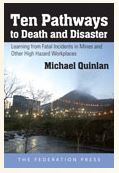One year ago, this blog included an article about possibly applying “broken windows” theory to occupational health and safety (OHS) as both involve the enforcement of rules. The article said:
“The principal OHS lessons from Broken Windows Theory are that one needs to scratch the surface of any new OHS approach, that these theories need time to mature and to be verified or questioned and that it remains an important exercise to look beyond our own experiences, but to look with an analytical eye.”
The theory is evolving according to the architect of the theory, William J Bratton in an audio report in NPR’s All Things Considered for 4 May 2015. According to that article:
“Bratton says he’s open to some revisions of the city’s broken windows philosophy, including more warnings for first-time offenders. But his larger message seems to be: If it ain’t broke, don’t fix it.”
All theories require adjustment to make sure they remain practical and relevant.
OHS professionals who correct the workplace hazards, particularly worker behaviours, that are the “low hanging fruit” seem to be following Broken Windows, theory to some extent. But to continue to do this, without addressing hazards higher up the hierarchy of controls, the organisational structure and the managerial prerogatives will devalue the original intention of enforcing worker behaviours and improving the work environment.
Mark Griffith illustrates the risk of devaluing the enforcement effort when he says, in the NPR article:
“We all want a better quality of life…. What we’re saying is the approach to it — the tactics that are used to arrive at that — are overly aggressive, and are ultimately on some level counterproductive to the very goals you’re trying to achieve.”
This seems equally valid to workplace safety management.

 On 18 March 2015, the Melbourne office of
On 18 March 2015, the Melbourne office of 